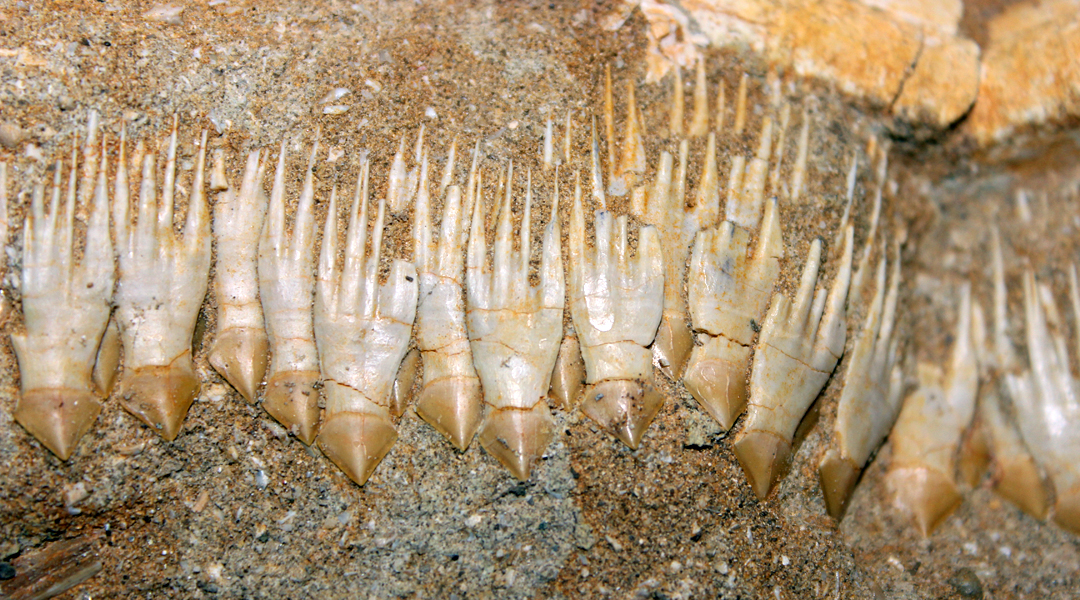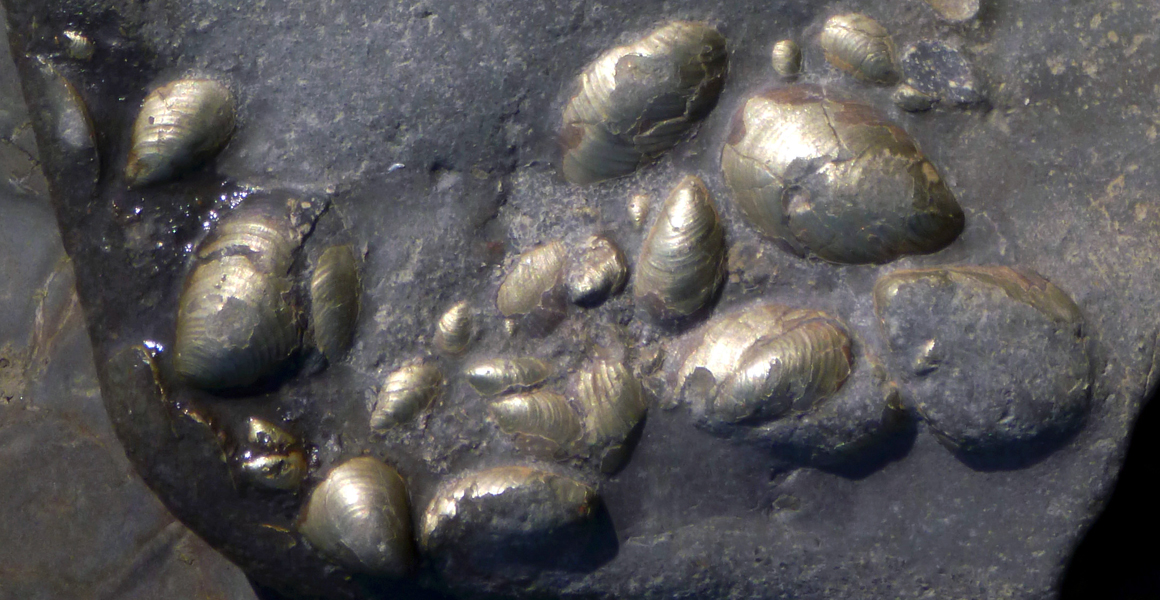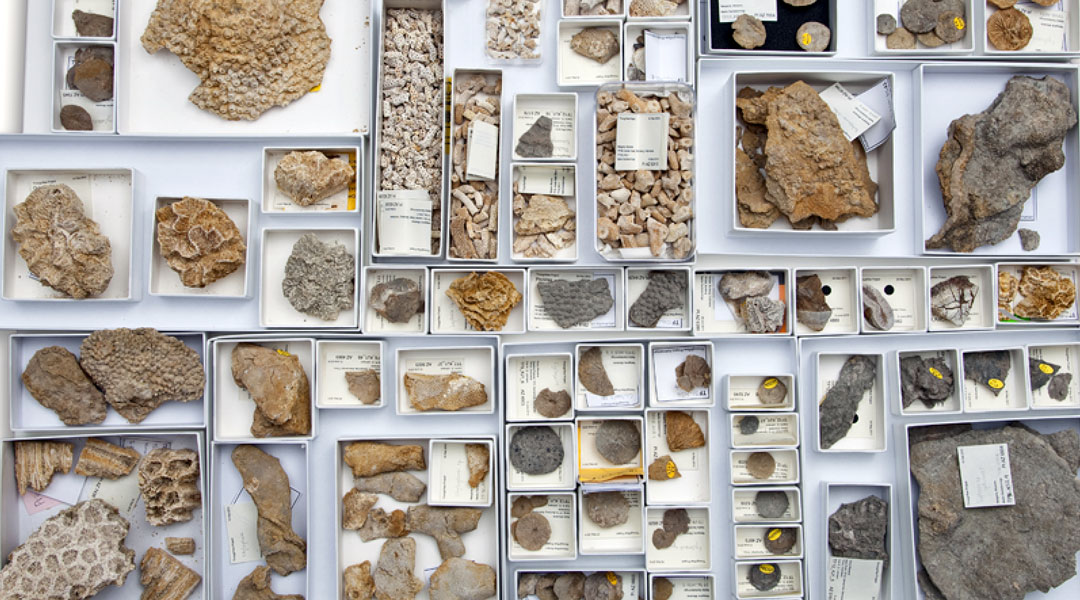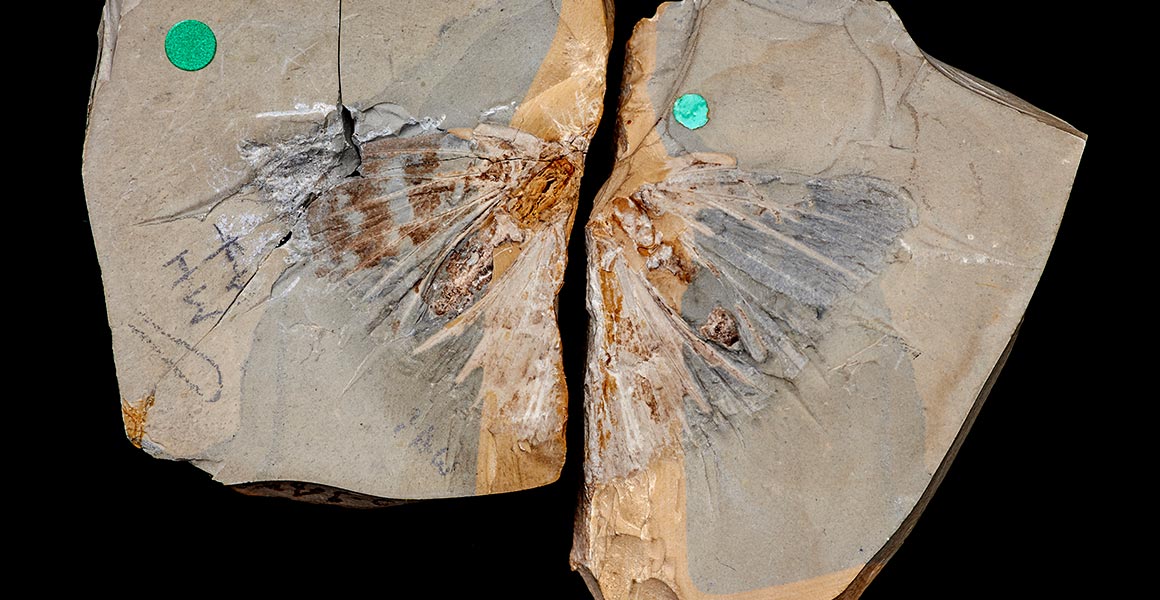The ‘saw teeth’ in this image are helping our researchers and collaborators learn about the evolution of teeth.

Fossilised 'saw teeth' of the ancient ray Shizorhiza stromeri
They belong to the nose portion of an ancient ray relative. The largest fossil of its kind, this new addition to our collections was found in Morocco in rocks around 66 million years old.
Hundreds of ‘teeth’ line the edges of the nose, or rostrum, giving the fish’s head the appearance of a jagged chainsaw. But they are not true teeth. They are thought to be highly modified versions of tooth-like structures known as denticles that cover the bodies of sharks and some rays.
While modern sharks use denticles for more streamlined swimming, this ancient fish used its modified versions for feeding. ‘It is likely it slashed into shoals of small, soft-bodied fish and squid and sucked up the dead and injured,’ said Museum collaborator Dr Charlie Underwood, from Birkbeck University, London.
Read the full story
Find out more about the unique ray fossil and what it can tell us.
Fossil fish research
Explore our research on ancient fish relatives and evolution.




Don't miss a thing
Receive email updates about our news, science, exhibitions, events, products, services and fundraising activities. We may occasionally include third-party content from our corporate partners and other museums. We will not share your personal details with these third parties. You must be over the age of 13. Privacy notice.
Follow us on social media